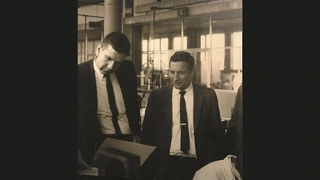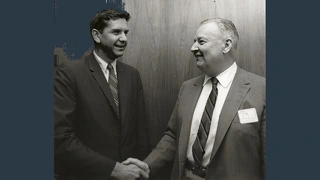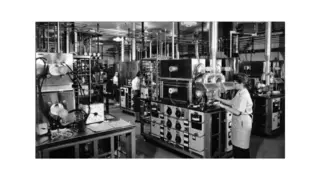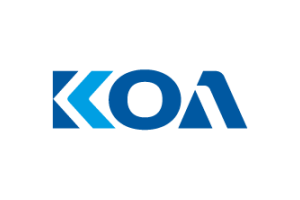Silicon Valley Legend
Charlie Sporck passed away at 96
Charlie Sporck, CEO of National Semiconductor from 1961 to 1991, has died at the age of 96. He was a Silicon Valley legend and is regarded as one of the founding fathers of the semiconductor industry.
Charlie Sporck was not born into success. He came from humble beginnings: He was born on 15 November 1927 in Saranac, New York. His father was a taxi driver and his mother ran the family petrol station. But it was precisely his simple upbringing that he believes was the reason for his later success - and that he learnt how to repair cars from his father, who was a mechanic, which is why he later studied mechanical engineering.
Charlie Sporck



Charlie Sporck was very sporty as a child and enjoyed playing football and basketball. During the summer months in high school, Charlie worked with his friends as a lifeguard at Lake Flower beach. One day while working, he discovered a girl named Jeanine Wamsganz that he liked. Charlie fondly remembered saying to his friend, ‘See that beautiful girl over there? I'm going to marry her!’ The wedding took place in 1949 and the couple stayed together from then on.
But first, after graduating from Saranac Lake High School in 1945, Sporck served in the US Army. In 1947, he began studying mechanical engineering at Cornell University, which the army financed, and which he completed with a bachelor's degree in 1950. During this time he was already working at General Electric, where he also took up his first job. He underwent management training and gained experience in manufacturing as a production manager in the capacitor department.
But because GE did not want to implement a new production method he had suggested, he bought a newspaper on his way home and read that a company called Fairchild was looking for a production manager for the newly founded Semiconductor Division. He quickly came to an agreement with the management - the start of a stellar career in the then emerging semiconductor industry.
Joining Fairchild also meant moving from New York State to Silicon Valley in Mountain View, then a small town of 30,000 inhabitants, where there was only one other semiconductor manufacturer besides the newly founded Fairchild division: Shockley Semiconductor. At Fairchild, he came into close contact with other industry legends such as Bob Noyce and Gordon Moore, who later founded Intel, as well as Jerry Sanders, the founder of AMD. The three remained lifelong friends. During this time, Jean Hoerni and Bob Noyce developed the planar process and the integrated circuit at Fairchild. At Fairchild, Sporck was responsible for manufacturing, which at the time was more like a laboratory. He brought manufacturing from the lab to the fab.
But the start at Fairchild was a leap in the dark: ‘The semiconductors seemed strange to me, I didn't know what exactly they were and how they worked. Everything I know about semiconductors today, I learnt on the job,’ Charlie Sporck would later recall. Apparently, he was able to apply the experience he gained in production at GE to semiconductor manufacturing. In any case, Sporck quickly rose through the ranks at Fairchild. He set up the first test and assembly plants outside the USA, the first in Hong Kong, and was promoted to General Manager when he was persuaded to take over as CEO of the then almost bankrupt IC manufacturer National Semiconductor in 1967. At the same time, Andy Grove and Gordon Moore also left Fairchild to found Intel.
‘National Semiconductor wasn't doing much right back then,’ said Sporck in an interview with Floyd Kvamme in 2014.
His big advantage was that he knew Dave Talbot and Bob Widlar from his Fairchild days, two excellent designers of analogue ICs, whom he brought to National. Bob Widlar was one of the most colourful figures in Silicon Valley, as brilliant as he was eccentric. He had designed the first operational amplifiers at Fairchild with the ‘µA702’ and the ‘µA709’ and at National he developed the ‘LM101’ and the ‘LM10’, among others. Analogue ICs became a focal point of National Semiconductor's product range.
Under Charlie Sporck, National quickly grew to become one of the world's leading semiconductor manufacturers: in 1965 the company had achieved a turnover of 5 million dollars, but by 1976 it had climbed to 365 million dollars. In 1981, National became the first semiconductor company in the world to exceed a turnover of 1 billion dollars.
The decisive factor was that the manufacturing specialist Sporck repeatedly succeeded in reducing production costs, offering cheaper products than the competition and thus gaining market share. This enabled him to develop new ICs in the fab and thus avoid the difficult and expensive transfer process from the lab to the fab, as Sporck recalled in an interview with Loyd Kvamme in 2014.
‘They're animals,’ was how National Semiconductor was described in 1981 in an article about the company's success in Fortune magazine. In 1991, Sporck retired from the management of National Semiconductor, which Texas Instruments was to take over for 6.5 billion dollars in 2011.
He was one of the first CEOs to offer his employees shares, which in Charlie's opinion better aligned the success of the employees with the success of the company. He also wanted to keep trade unions at bay, with whom he had already had bad experiences during his time at GE.
As at Fairchild, he also campaigned at National for test and assembly to be relocated to the Far East. He thus became one of the pioneers of the globalised semiconductor industry.
Even then, the American semiconductor industry faced a problem: the subsidies that Asian manufacturers received distorted competition. Charlie Sporck was instrumental in working with other major semiconductor manufacturers and the US government to prevent the American semiconductor industry from being driven to ruin by foreign competitors. Along with Bob Noyce and Jerry Sanders, he was a driving force behind the formation of the Sematech Consortium, which received government support and was instrumental in keeping American equipment manufacturers competitive and the U.S. a leader in process technology in the 1980s.
If you would like to find out more about Carlie Sporck and the early days of semiconductor history, we recommend the book by Charlie Sporck and Richard L. Molay: ‘Spinoff: A Personal History of the Industry that Changed the World’.





